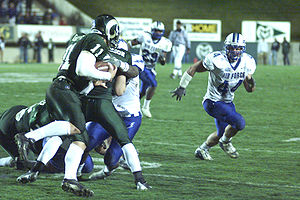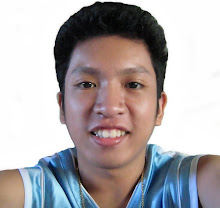By: Jason OConnor
There seems to be an endless stream of idiotic things professional athletes do. I guess if you put a bunch of young men together, give them a boat-load of money and lots of free time, what can you expect? When beautiful women, the media and the luxuries of life are thrown at them, their cockiness and stupidity are only amplified. Here are my top ten, but of course there are lots more. However, we must always remember, they are only human too.
1. Me Make Good Play!
Ever see NFL players beat their chest like a gorilla after they just made a good play? I guess it's a Tarzan thing or something, but they look kinda ridiculous. Maybe if I was out there on the field and I was a 170-pound kicker watching a defensive lineman beating his chest after a sack, I may be a little intimidated, but overall, they look really silly doing it. (I attended a professional all-women's football game this year and saw a 350-pound woman do this, which was particularly scary.)
2. The God Factor, Part I
I hate it when players point up to Heaven and thank God after a good play too. Bear in mind however, that I am not criticizing religion or anyone for having faith in God. But this just looks lame. It happens a lot in MLB for some reason. A strikeout will cause Pedro Martinez to do the chest-touch and double-index-finger-point to God as if he and God were chatting earlier about possible pitching strategies in the locker room, and the strategy they chose together worked, so he had to personally thank God using his direct line.
3. The God Factor, Part II
Locker rooms, sidelines, dugouts, bullpens, and court sides are often full of praying men. One question: "If you are praying to win, and your opponent is praying to win, who does God choose?
4. Bad Boys, Bad Boys, Whatcha Gonna Do When They Come For You?
Why do pro jocks get arrested for drug and/or gun possession so much? Of course, lots of people do this one unfortunately, we just happen to hear about the famous athletes who do. C'mon guys, keep the drugs at home, stop driving while high, and for crying out loud, stop packin'! You don't need a gun. Who's going to harm you? You're six six and weigh 275 pounds!
5. It Wasn't Me!
Telling Congress you don't do steroids, then getting caught doing steroids is pretty dumb. I loved watching the clips where Rafael Palmero sat pointing a finger at the Congressional hearing stating with disgust and confidence, "I do not take steroids." And then the next clip showing him apologizing profusely for taking steroids.
6. I Love You To Death
Murdering ex-lovers doesn't happen very often fortunately, but my list wouldn't be complete without at least mentioning O.J.
7. Rabbits
It seems that there are a lot of NBA players out there who use the phrase, "My baby's mom" a little too often. And there's too many pro athletes' offspring introducing their buddies as "My brother from another mother." Ever hear of a condom?
8. How Much Bling Bling Do You Need!?
It's fascinating to watch professional athletes blow through all their millions in their first year or two and then have nothing left at retirement, which is usually only a few years later. How many fifty-year-olds are still playing pro sports? Not many (minus golfers of course, who will drag their canes and oxygen tanks with them on the fairway). So why don't pro athletes save a couple of bucks?
9. Love My Hog
It's not too smart to get injured off the job when you're a pro athlete. Cleveland Browns Kellen Winslow Jr. crashed his motorcycle recently and will now miss the 2005 NFL season. Jay Williams, a number one draft pick of the Chicago Bulls, also got into a motorcycle accident and has not played since. What's with motorcycles anyhow? Talk about killing the goose that lays the golden eggs.
10. "When You Come To a Fork in the Road, Take It" - Yogi Berra
Saying really dumb things in the media seems to be a particularly easy thing to do if you're a professional athlete. I looked in a lot of places online to come up with a good list here. My problem was that there were so many good ones, I wasn't sure which ones to pick. But here are a few gems:
- Paul Hamm, Gymnast: "I owe a lot to my parents, especially my mother and father."
- Baseball player Tito Fuentes, after getting hit by a pitch: "They shouldn't throw at me. I'm the father of five or six kids."
- Football coach Ray Malavasi: "I don't care what the tape says. I didn't say it."
- Baseball player Dizzy Dean, after a 1-0 game: "The game was closer than the score indicated."
- Boxing Analyst: "Sure there have been injuries, and even some deaths in boxing, but none of them really that serious."
- Soccer commentator: "Julian Dicks is everywhere. It's like they've got eleven Dicks on the field."
- Bill Cowher, Pittsburgh Steelers coach: "We're not attempting to circumcise rules."
- Jim Wohford: "Ninety percent of the game is half mental."
- Joe Theismann: "Nobody in football should be called a genius. A genius is a guy like Norman Einstein."
- Charles Shackleford of the NCSU basketball team: "Left hand, right hand, it doesn't matter. I'm amphibious."
- Shaquille O'Neal, on his lack of championships: "I've won at every level, except college and pro."
As I already asked before, what can we expect from professional athletes? They often reflect society as a whole. Too much time, money and fame at a really young age can augment stupidity, simple as that. We all say and do dumb things, but thankfully, we don't have microphones and video cameras pointed at us all the time. As Norman Einstein used to say, "Really smart athletes stay away from problems because they can predict the future with their ESPN."
Author Bio
Jason OConnor operates www.bestshowticketslasvegas.com and loves to attend NFL and MLB games.
Related Sites:Naked Pinay Views, Friendly Remarks , Greeny Fashion, Money Talks , Marc Nand's Blog , Nodding Nanding's Journal, Amusing Disclosure , PC Operatis , Online Shopster

![Reblog this post [with Zemanta]](http://img.zemanta.com/reblog_e.png?x-id=d8be9373-a0f0-45b7-aefc-459e7b9db9cb)
![Reblog this post [with Zemanta]](http://img.zemanta.com/reblog_e.png?x-id=cb576e9b-babf-4c0a-b532-d0b8f7c96609)

![Reblog this post [with Zemanta]](http://img.zemanta.com/reblog_e.png?x-id=1f43eb4a-07a1-4431-848e-ef4fd2644e0c)


![Reblog this post [with Zemanta]](http://img.zemanta.com/reblog_e.png?x-id=10b44c06-661d-4309-a4ac-d4c4f6f5ec6b)

![Reblog this post [with Zemanta]](http://img.zemanta.com/reblog_e.png?x-id=d4aa1f66-c936-4720-9239-588823a16258)





![Reblog this post [with Zemanta]](http://img.zemanta.com/reblog_e.png?x-id=55124041-9dfa-4c5a-98ca-65e32560d7ce)
